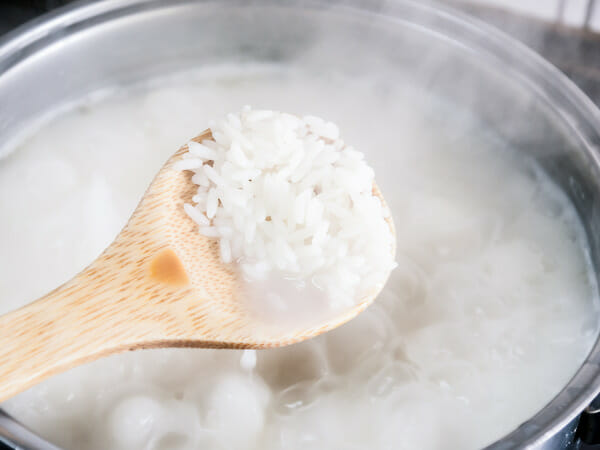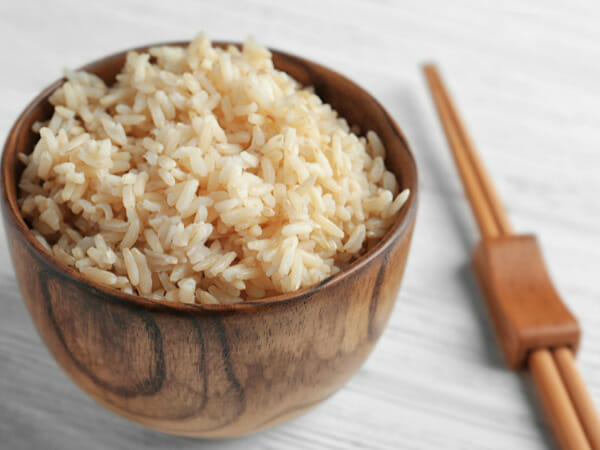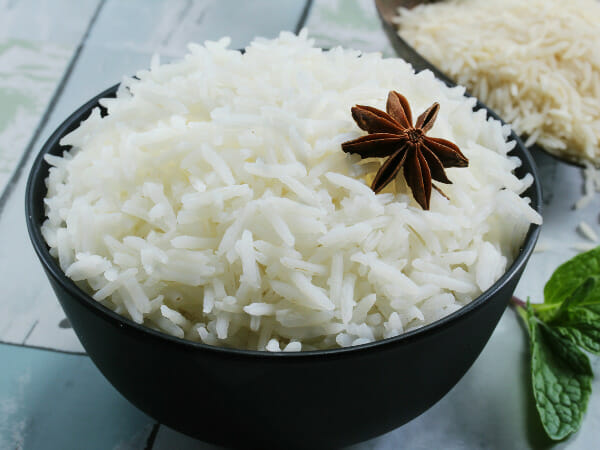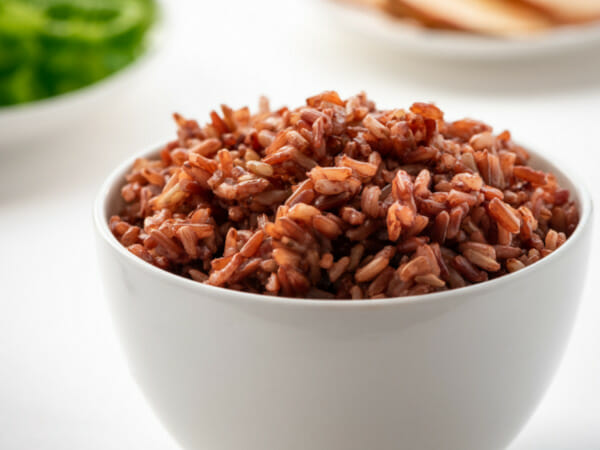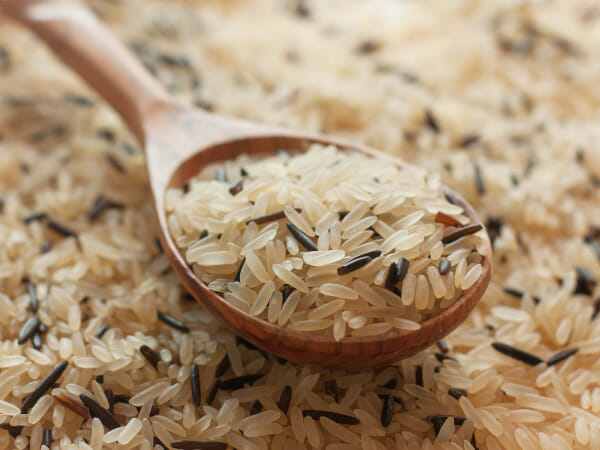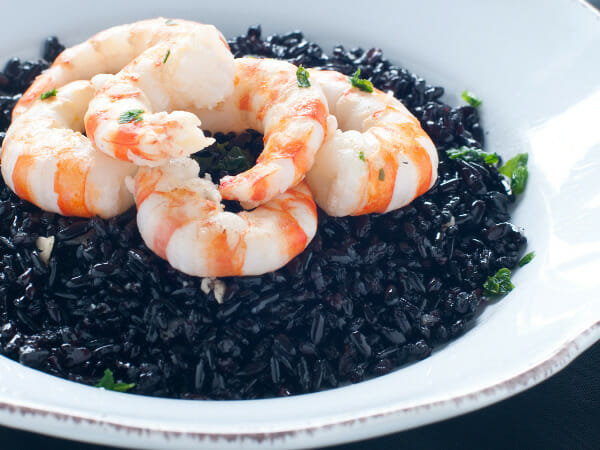Different Ways to Cook Rice
Nothing beats a well-cooked meal in a perfect pot of rice, garnished with masalas, and chicken. Plus, a conservative amount of vegetables. There is no one way to cook rice, it all depends on what type of rice you are cooking and the recipe you are using. White rice is the most common type of rice but there are over 17 types of rice if we are being modest.
In this guide, however, we will be discussing the 7 commonest types of rice and how to cook them without recipes. Then, we will suggest the best recipes to add to these different types of rice. If you desire to switch between different types of rice meals without fear of adding too much water or spice, this guide is an interesting and perfect guide for you.
There are people who think white rice is the only type of rice which is quite understandable since some regions have access to just one type. Also, this type of rice is the cheapest and commonest rice available in the market. For 2 to 7 cents per ounce, you can get any of the three kinds of white rice. Hence, it is natural for many people to label white rice as the perfect rice because it’s the most accessible.
The Most Common Types of Rice and How to Cook Them
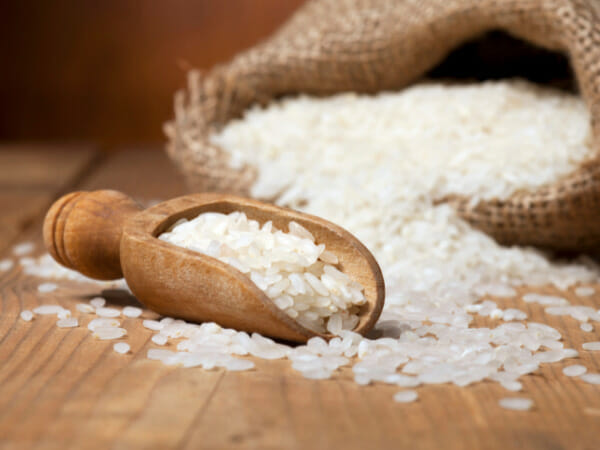
Whether it’s Chinese food night or you’re just craving some, knowing the most common types of rice can help you cook the best rice meal. In this guide, you’ll learn not only the different types of rice, we’ll also help you discover how to cook them.
White Rice
When you opt for white rice, you are trading a good chunk of the nutrients for increased shelf life and easier digestion. This type of rice is a sort of rice that has gone through the milling process which denies the rice from its bran, husk, and natural germs. The resulting rice is a bright, light, and polished rice with an altered taste and texture. The trade-off does not come without its own consequences as the exit of Vitamin B1 (thiamine) caused a BeriBeri disease pandemic in Asia during the 19th century.
If you stay in the States, you don’t have to panic because of beriberi, as US law requires manufacturers to enrich white rice with the nutrients stripped off it while milling it. You can rest assured that your white rice is enriched with Vitamin B1, Vitamin B2, and iron.
Given that white rice was made from brown rice, it’s safe to say brown rice is more nutritious than its descendants. Brown rice retains its bran and nutrients while giving up its husk. Unlike Brown rice, white rice is easier to cook. Within 20 minutes or less, your cooked rice is done. On the downside, it has excess starch but fits perfectly with all your recipes. It can be cooked in an instant pot, airtight container, or modern rice cooker.
Classifications of White Rice
White rice can either be short, medium, or long grain. The three classifications of rice have varying attributes that make them suitable for different kinds of meals. Short grain rice possesses the same length and width. Cooking short-grain rice results in soft and tender rice. When cooked, it becomes sticky. Examples of short rice meals are sushi rice, bomba rice, and arborio rice. Such meals require molding at any point in time.
Unlike short-grain rice, medium-grain rice is twice as tall as it is wide. In this case, the resulting meal of the medium one is a lot fluffier and stickier than that of the short rice. The medium grain rice is perfect for cooking rice meals like Paella and risotto. The long-grain white rice beats other alternatives in terms of width and length. It becomes moderately fluffy on cooking, but it doesn’t get sticky like other forms. Great examples of long-grain white rice are basmati rice and jasmine rice.
Asian dishes such as Lemon and scallion stir fry, sugar snap pea stir fry, and spicy stir-fried beef are best served with white rice. If you are a sucker for Asian dishes or use rice for your meal prep, then it is necessary to know how to cook it.
How to cook white rice?
Boiling 100 grams of uncooked rice can give you between 240 to 260 grams of cooked rice. The absorbed water is responsible for the additional weight and fluffy look.
Some people prefer to boil their rice with enough water, then sieve the rice using a fine-mesh sieve. However, to make the perfect rice meal, you need to know the correct water to rice ratio. There is no one-size-fits-all formula for all types of rice. For white rice, the plain water to rice ratio is 2 cups of water to 1 cup of rice. You can cook your rice with an instant pot, sheet pan, or smart rice cooker. Regardless of the type of rice cooker you employ, the result should be a tasty and fluffy rice meal.
Step-by-Step Guide:
1. The first step is to measure the cup of rice and water you intend to use. Then, boil the cold water till it’s hot. While the water in the pot is getting hot, rinse the rice in a bowl. Once you see hot steam coming out of your rice cooker, sprinkle tiny pinches of salt into the boiling water. Ensure the salt used is not too much. Add the rinsed rice to the boiling water. You will notice that the rate at which it is boiling will reduce due to the input of cold rice.
2. Allow it to steam up a little. Then, reduce the heat and keep the rice-water mixture at a simmer. Reducing the heat is necessary so as to ensure that the rice is evenly cooked and prevent it from burning underneath. Also, boiling at a high temperature can cause the starch from the rice to bubble up and mess up your cooking space.
3. Cover with a tight-fitting lid and leave the boiling mixture for about 17-20 minutes. Note that this number can go up as the cup of rice increases. The higher the cups of rice cooked, the higher the duration taken before it becomes soft. Set your timer and do not open the pot at intervals, as this habit can increase the cooking duration. After 20 minutes, check the pot. Your rice meal should be done.
Also, avoid getting your rice turned while cooking because it might cause it to burn before the timer stops. To preserve the leftover, freeze the cooked rice. When you freeze rice using a refrigerator, note that it can last for about five days before getting spoiled. Reheat rice when you are ready to consume it.
Brown Rice
If you are a diabetic who is looking for better alternatives to white rice, brown rice is your best bet. However, it must be taken in moderation too. Brown rice is high in fiber, protein, carbohydrates, vitamins, minerals, and antioxidants, all of which work to regulate your blood sugar control. Because of its high nutritional value, brown rice is also referred to as whole grain rice. Although brown rice has more nutritional calories, it definitely takes more time to cook. Like the white rice, the brown rice comes in different sizes.
Brown rice retains that sweet taste and gives you a chewy, dense, and nutty experience while eating it. Its shelf life is less than that of white rice. The brown rice is best suited for recipes such as Sesame brown rice salad with shredded chicken and peanuts, chicken and brown rice skillet, and brown rice stuffing, stracciatella with brown rice, brown rice with tuna, avocado, and toasted nori, and lastly, crisped brown rice with beef and vegetables, and eggs.
How to cook brown rice?
To cook a perfect rice meal using brown rice, the standard duration ranges from 35 to 51 minutes. You can reduce the cooking time by fracturing the thick layer by blasting with four. Flour-basted brown rice takes a relatively shorter time to boil because the four perforates the bran without peeling it off.
The disadvantage of eating brown rice is that arsenic content accumulates in the body, which can cause skin lesions or cancer in the long run. Brown rice contains more arsenic content compared to white rice because the bran which contains arsenic remains intact and is ingested by the end consumer. Brown rice is a cent costlier than white rice. With 4-8 cents per ounce, you can get your brown rice at the market.
Step-by-Step Guide:
The cooking technique described below is not for quick-cooking or instant brown rice.
1. Rice gets sticky when you don’t rinse it before cooking. Rinse the brown rice in fine-mesh strainers above a huge bowl until the water coming from the rice is clear. If you do not have fine mesh filters, you can use a bowl. The water to rice ratio for brown rice is 2 cups of water to 1 cup of rice.
2. Boil the water in the pot. Then, add the measured and rinsed rice to the pot.
3. Lower the heat for about 45minutes. After the cooking durations, your cooked brown rice should be ready.
Basmati Rice
Basmati Rice is long-grain white rice popular in India and Pakistan. It has considerably higher calories and carbs compared to regular white rice. While both types are examples of milled rice, basmati rice has a distinct flavor, thanks to an aroma compound called 2-acetyl-1-pyrroline. It possesses a characteristic nutty flavor and aroma. The perfect recipes for stovetop basmati rice include mango chicken curry, creamy coconut lentil curry, and ground beef stir fry with garlic ginger sauce.
How to cook basmati rice?
For this kind of rice, the appropriate rice to water ratio is 1 cup of rice to 1.5 cups of water. You do not have to rinse the basmati rice.
Step-by-Step Guide:
1. All you need to do is boil the cold water, and add the measured basmati rice.
2. Then, lower the heat and cover with a lid. Simmer the rice and cook for 12 minutes.
3. Off the stove or gas and let it rest with the lid on for about 10 minutes after cooking. Fluff the rice using a fork, then serve.
Red Rice
Red rice is a kind of rice that owes its color to its anthocyanin component. There are several classes of rice with unaltered bran, but red rice is the most nutritious. Its low glycemic value makes it a perfect substitute for white rice. Its ability to digest slowly makes it a good source of carbs for diabetics. It has a characteristic high amount of nutrients like antioxidants, magnesium, iron, zinc, and calcium.
Examples of red rice include Bhutanese red rice, Oryza rufipogon, Rakthashali, Oryza longistaminata, Oryza puchata, Thai red cargo, Camargue red rice, matta red rice, mini-angan red rice, Arroz da terra, and Malaysian red rice. It is perfect rice for recipes such as Charleston red rice, Nigerian jollof rice and beef, Savannah red rice, and many more.
How to cook red rice?
Some people prefer to soak the red rice before boiling it. The water to rice ratio depends on what method you like.
Step-by-Step Guide:
1. Rinse the red rice before boiling to get rid of impurities and some starch content.
2. If you have soaked the red rice two hours prior to when you want to cook it, add 1.5 cups of water to 1 cup of rice. However, if you like the direct boiling method, add 2 cups of water to 1 cup of rice.
3. Then, add tiny pinches of salt, and one teaspoon of cooking oil or butter.
4. Boil the measured water into the pot and boil.
5. Pour the appropriate rinsed rice into a pot and cook for about 45 minutes.
6. Then, Put off the heat and let the content rest for about 10 minutes. Use your fork to fluff the rice and serve.
Wild Rice
Wild rice, commonly called water oats, is a species of grass that produce grains that are majorly consumed as food in North America. In China, the stem of wild rice is used as a vegetable. As the name suggests, the natural habitat of wild rice is aquatic wildlife. However, due to the commercialization of this species, they were domesticated in the 20th century in the States and Canada. Gluten-free wild rice has a high protein, lysine, fat, and dietary fiber content. According to nutritionists, oatmeal is the only grain with more protein than wild rice. The problem with wild rice is that due to their wild nature, they are prone to toxic fungus, ergot, and infestation. Infected grains have characteristic purplish or pinkish blotches or fungal growth. Infected wild rice causes ergotism.
How to cook wild rice?
Have it in mind that 1 cup of wild rice calls for 1.5 cups of water. Firstly, rinse the wild rice in a fine-mesh strainer under cold water from a running tap. If you are using an instant pot, add the mixture of the rice and water into the pot, cover with a lid and seal using the pressure valve. Allow the mixture to cook for about 35 minutes. Once the rice is soft and tender, fluff using a fork, and you are good to go. Yay! Food is ready.
Step-by-Step Guide:
If you are using a stovetop for cooking your wild rice, follow these steps strictly. The ratio of water to rice is 1 cup of wild rice to 4 cups of water.
1. Rinse the wild rice in a fine-mesh strainer below cold water from a running tap.
2. Add the mixture of rice and water to the saucepan. To ensure that the rice is evenly cooked, use a medium-sized saucepan unless you are cooking a large amount of wild rice.
3. Reduce the heat and cover the saucepan.
4. Allow the mixture to simmer for roughly 45 minutes and stir from time to time. Peradventure, some water is still present in the cooked rice; drain the extra fluid.
5. Then, fluff with a fork before serving the meal. It is compatible with recipes like wild rice salad.
Black Rice
Black rice, aka purple rice, is a type of glutinous rice. The black-colored rice turns purple on cooking. People often confuse glutinous varieties of rice with rice that has gluten. That narrative is false and baseless. They are called glutinous because they are sticky (as in glue-like). It is compatible with recipes like Tamarind eggplant with black rice, mint, and feta.
How to cook black rice?
Without soaking black rice, it might take an hour to cook.
Step-by-Step Guide:
1. Soak the rice for 30 minutes before cooking. The water to rice ratio is 1 cup of rice to 2 cups of water.
2. The cooking process will take 30 minutes after soaking.
Related Articles
Arborio Rice
Do you love the starchy taste? Arborio rice is for you. The Italian short-grain rice got its name from the town of Arborio, Po Valley, Italy. The rice does not lose its firmness, creaminess, and chewiness on cooking. It owes its starchy taste to its high amylopectin content. It is the major species used in making rice pudding.
How to cook arborio rice?
The water to rice ratio for arborio rice is two cups of clean water to one cup of arborio rice.
Step-by-Step Guide:
1. Boil the measured water till it reaches medium-high heat.
2. Then, add a cup of arborio rice to the heated water. Keep stirring the rice until the mixture begins to boil once again.
3. Seal the pot and lower the heat to medium-low heat and let it simmer for 20 minutes. Your arborio rice meal should be done after 20 minutes. Fluff with a fork and serve.
Conclusion
The first thing to take away from this guide is that there is no one way to cook your rice. The cooking method depends on the type of rice you intend to cook. Also, there are endless recipes to follow, so don’t get stuck with one recipe. Try out other flavors and ingredients to arrive at your favorite ones.

